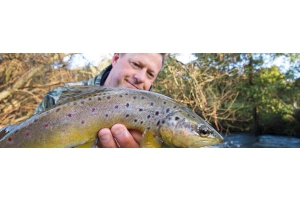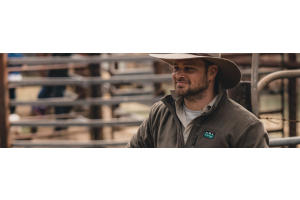
Hunting Boots Buyers Guide
Hunting is a sport that requires lots of precision, patience and stamina. But you’ll also need top-quality boots to get you through the day. Introducing the Ridgeline range of hunting boots...
Two of the most common questions that we get asked are “what’s the difference between hiking and hunting boots?” and “how do I know a good pair of hunting boots when I see one?” We’re here to help you out! Here’s what you want to look for when choosing boots for hunting:
Mid to high cut tops
Here’s the lowdown: boots come in low, mid and high cuts. Each has their own special benefits:
● Low cut - cooler, more breathable, lighter weight
● Mid cut - more ankle support, more protective, medium-weight
● High cut - extra protective and supportive
As you might guess, low cut boots don’t do well for hunters. They’re more prone to letting water splash in, they’re less supportive, and they’re less protective. For hunting, you definitely want a mid or high cut boot. This will help keep your ankles from rolling, keep your feet much drier, and best of all, it helps protect your skin from scratches and bites.
Durable uppers
You’ll find that hiking boots place extra emphasis on ventilation and coolness since the goal there is walking, walking and more walking without much stopping! Hunting boots, on the other hand, care much more about durability. Here are the types of uppers you want:
● Leather - leather is formed from tanning the outside of a hide (the grain): removing the hair and buffing it to a smooth and shiny finish. Leather can be full-grain (best quality), top-grain (high quality) or split-grain (lower quality). The lower the leather quality, the more processing, sanding and buffing it took to remove its imperfections - so choose full-grain or top-grain over split-grain for better longevity.
● Traditional leather - this is your typical smooth, shiny leather. It’s very durable and usually made of full-grain leather, which makes it extra resistant to damage and prolonged exposure to moisture.
● Nubuck - nubuck leather is also made from the outside hide, but with a napped finish for a softer feel. Nubuck has better out-of-the-box comfort and is still super resilient. You can’t go past the Ridgeline Apache or Warrior for top-notch, full-grain nubuck leather boots. Ridgeline Ambassador Rowan Brady says about his Ridgeline Apache boots:
They didn’t seem to require breaking in. The initial walking and occasional running and bush bashing didn’t leave me with sore feet and I could focus on having fun.
● Suede - stay away from suede, because it isn't as durable or moisture-resistant as nubuck or traditional leather. This is because it’s made from splitting the leather, removing the grain and keeping the inner hide for its velvety feel - great for dressier shoes, but not for hunting.
● Nylon - there are many different types of synthetic uppers. A good-quality hunting boot should use heavy-duty materials like canvas nylon with a high denier (the higher the denier, the tougher the fabric). Anything 1000D or higher is pretty damn good. Check out the Ridgeline, Aoraki or Arapahoe boots for an awesome mixture of canvas nylon to cut weight and soft yet durable nubuck leather.
● Rubber - watertight rubber is best for when you’re splashing around in creek beds, swamps and marshland all day. As a bonus, they won’t absorb your scent.
Waterproofing
Hiking boots often come in a non-waterproof and waterproof version. You want a waterproof boot for hunting, however, since prey is well-known to frequent and pause near water sources. As a result, you will often have to trek through damp terrain. Ridgeline Ambassador Jacquii Ferling says about her waterproof boots:
When choosing a hunting boot I look for 3 things: they must be waterproof, lightweight and most of all comfortable to wear. I have finally found a boot that is all of these things.
All Ridgeline hunting boots are waterproof - you’re welcome! Here’s how:
● Treated leather - most leather is treated with a form of DWR (Durable Water Repellency) during its tanning process. This makes water bead and drip right off the boots’ surface rather than soaking in.
● Anti-wicking laminate - synthetic uppers can be treated with hydrophobic coating like polyurethane (PU) to create their own version of DWR.
● Waterproof membrane - these membranes stop any water that’s managed to soak through the upper materials from getting through to your socks and feet. HydroGuard and
GORE-TEX (GTX) are two great examples. Water droplets are too large to pass through these membranes, which are covered in billions of microscopic pores that do allow small water vapour molecules to escape so you aren’t left swimming in your own sweat.
Insulating lining
Nobody likes cold toes! Whereas hiking boots usually aim to vent heat, hunting boots should include an insulated lining to keep your feet warm. This is especially important during the cold seasons and when you’re waiting in a tree stand or ground blind for hours on end.
Our hunting boots feature 200gsm Thinsulate linings for an excellent blend of warmth, breathability and comfort. Thinsulate is a great insulating lining because it provides a lot of warmth for its low bulk and weight. Meanwhile, 200gsms is a perfect amount of insulation for active hunting: not too hot for warm weather, but enough to keep the chills away on frosty days.
Vibram outsoles
Hiking and hunting boots both need grippy and durable rubber soles. The best rubber on the market is made by Vibram, which has a reputation for high quality, durability, and traction. All Ridgeline hunting boots have Vibram cupsoles with hunting-specific tread designs, like the anti-slip and shock-absorbing ‘wheel gear’ that protects the ankle from jarring.
Ridgeline Ambassador Rowan Brady says about his Ridgeline Apache boots:
Crossing through the odd creek proved the [Vibram outsole] provided great traction and I had good feel throughout, finding my footing and not slipping.
Camouflage patterning
Camo patterns help you to avoid prey spotting you. This point is less important than others if you
aren’t wearing camouflage on the rest of your body. If you are, then a camo pattern on your boots will help complete your disguise. Lucky for you, the Ridgeline Camlite is fully camouflaged, and the Arapahoe has partial camouflaging too.
Stitches over glue
Hunting boots need first-rate durability. Many boots today have their uppers glued to the sole because they’re cheaper to make. But a stitched boot won’t have bits that melt, crack and separate in heat (think campfires), and can be easily re-soled if necessary.
We’ll leave you with some wise words from some of our Ridgeline Ambassadors
Jacquii Ferling:
I believe that your hunting boots are the most important piece of hunting gear that you take with you other than your rifle. Choose the brand that you can trust and make Ridgeline your choice for hunting.
Rowan Brady:
One of the most important factors in your hunt is having comfortable feet throughout. This Ridgeline boot was just that and stands up to New Zealand hunting conditions very well. It is made affordable and you can’t really go better for the cost.
A mid-cut water proof boot with Hyper Grip textured outsole. A rand that runs right round the boot and isn’t just glued on but double stitched right around.
I paired them with some Ridgeline gumboot socks, the socks slipped on effortlessly and I found right away the boots fit the wide footed nicely. I laced them up and the coated speed hooks moved round with me not damaging the laces on tightening up. All steel hooks so I can see these will stand up to some rock bashing and scrapes. More expensive boots in my experience have taken days around home or at work breaking them in. I’d warm them up and oil them to soften the leather and I’ll be lucky if I don’t get back to camp after the first walk without some discomfort. I took the Apache’s out on a pig hunt with some mates and I got a surprise. They didn’t seem to require breaking in. The initial walking and occasional running and bush bashing didn’t leave me with sore feet and I could focus on having fun.
Ridgeline’s Apache is made from top-grain Nubuck leather which is waterproof treated and paired with a Hydroguard Membrane. A 200g Thinsulate inner helps keep you warm on those frosty days.
Crossing through the odd creek proved the Hyper Grip provided great traction and I had good feel through finding my footing and not slipping.
I look forward to the next hunt in my Apache’s and know it’ll be a comfortable one.










